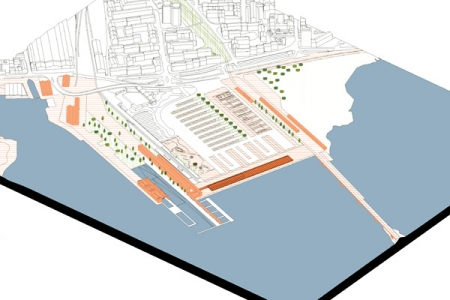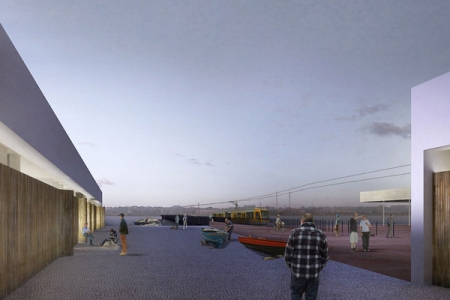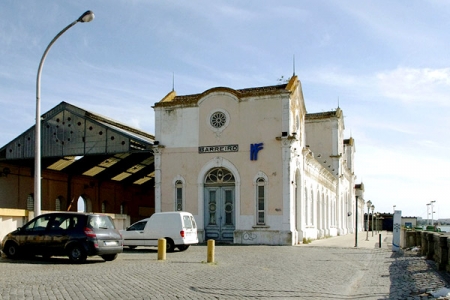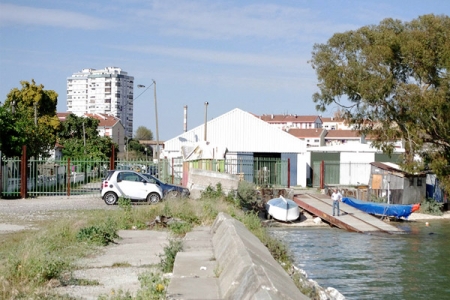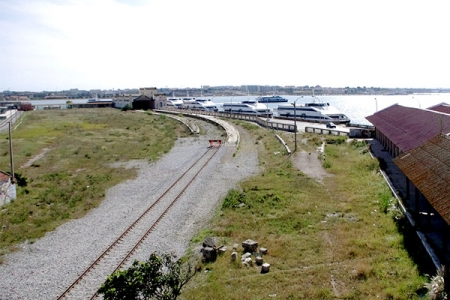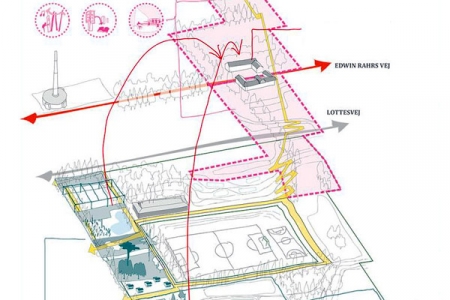Insert Coina
Barreiro (PT) – Mentionné
DONNÉES DE L’ÉQUIPE
Représentant d’équipe: Massimo Dicecca (IT) – architecte ; Associés: Elisa Avellini (IT), Marcella Claps (IT), Andrea De Sanctis (IT), Dario Marcobelli (IT) – architectes
via Montecalvario 51/b, 70022, Altamura (BA) – Italia
+39 333 6598807 – massimodicecca@hotmail.it – profile on Divisare
Voir la liste complète des portraits ici
Voir la page du site ici

D. Marcobelli, M. Claps, M. Dicecca, E. Avellini & A. De Sanctis
INTERVIEW en anglais
Cliquer sur les images pour les agrandir
1. How did you form the team for the competition?
The team was created as an almost spontaneous consequence coming from our common experience as teaching assistants in the same architectural design studio at Sapienza University of Rome. We have different backgrounds: however, sharing a passion for research and working side by side with architecture students made us a cohesive, even though temporary, group.
2. How do you define the main issue of your project, and how did you answer on this session main topic: Adaptability through Self-Organization, Sharing and/or Project (Process)?
Since the beginning, our main goal has been to consider the city as a process rather than a static object. We intend to involve social and economical actors together with architectural and natural ones to coordinate both horizontal and vertical strategies. We are not pursuing any sort of populist urbanism. Instead, we are proposing a series of design actions and reactions that could make of this site an “adaptable”, coherent and open-structured part of the city. We worked on a gradual, step-by-step process to define identities and places and to finally re-know them.
3. How did this issue and the questions raised by the site mutation meet?
Our site area shares a “disease” common to many other disused European areas, traceable to an uneven urban growing process strictly linked to unsustainable waste-producing urban choices. We are in a grey zone, whose memories kept by the inhabitants are slowly fading away. Here the edges barely communicate with the city and the river. Barreiro has to go back to speak again with its territory and people. To this extent, a first fundamental operation has to be a re-appropriation of its borders, with special regard for the river rhythms.
4. Have you treated this issue previously? What were the reference projects that inspired yours?
Every member of the group already treated individually the issue of urban regeneration in different contexts. Moreover, we all studied this topic from various angles with our degree and phd thesis: our different approaches determined an accomplished and many-sided working team.
Among the reference projects that inspired our design, we must cite the work of Madrid based group Ecosistema Urbano together with the books "Urban asymmetries. Studies and projects on neoliberal urbanization" by Tahl Kaminer, Miguel Robles-Duran and Heidi Sohn and Architecture 00’s « Compendium for the civic economy".
5. Today –at the era of economic crisis and sustainability– the urban-architectural project should reconsider its production method in time; how did you integrate this issue in your project?
Urban development is a kind of investment very few and privileged stakeholders can control. Architects and architecture itself move back powerless. They are all forced to turn on pragmatic positions or, even worst, withdrawn into their branches of knowledge and embrace abstract theories, with few coherent middle road. To escape from this situation, we propose an extended process of re-qualification structured by phases. We see the urban project as the result of the efforts of various actors, including us –architects–, called to cooperate, alternating their works within this program well marked by phases.
6. Is it the first time you have been awarded a prize at Europan? How could this help you in your professional career?
It is the first time we have participated in Europan and luckily it is also the first time we have been awarded a prize at this competition! Besides the resonance that such a prize can have for our paths, to us, Europan has represented above all a moment of personal growth and design skills improvement.

